How to ride street in winter while staying warm, and safe.
If you are one who hates the thought of putting your bike away for the winter, and can't live without the fix riding provides you, there are ways to do it while staying warm, and safe. While there are other suggestions out there, here is what we have tried and has worked for us.
We've been riding street in winter for years now, in Southern Ontario where the temperatures can go as low as -30C (-22F). Following the steps below, my body has never been cold. I am one who suffers from severe back pain, as well as stiffness when getting up on cold winter mornings. I have to say that recently, when the roads were finally not coated in a layer of hardened snow and ice from the Arctic Vortex tainted winter of hell, on a day I was in so much pain I could hardly walk, we opted for a ride rather than pain killers. In spite of the cold temperatures and being bent over a bike, that ride absolutely did my back wonders. There is so much value in doing things that make you happy, and the chemicals your brain releases throughout your body as a result.
When riding in colder temperatures, the most vulnerable parts are the fingers, and considering the important role they play while operating a motorcycle, special steps need to be taken to prevent freezing.
We have one rule we always follow: 10C (50F) and under, wear winter gloves. It may feel fine and warm-ish standing in your driveway, but once you get out there, that 10C will start to feel pretty cold.
Many people will say to you "but aren't you cold?". If you dress properly and prepare your bike, you'll be fine. I always point out to them other winter sports like snowmobiling, snowboarding, skiing...and those people manage to stay warm.
Safety concerns are paramount as always with motorcycles, but even more so in winter. Riding for anyone, regardless of time of year or experience, can be, and is, risky. If you do not feel comfortable with the risk, or your abilities, you should not ride in winter. However, over-confidence can also be dangerous.
Prepare and be aware
It is vital to do what you can to stay warm and be aware of your changing condition as you ride. Being cold can impair your judgement and reaction time. If you are already feeling the cold, take a break inside somewhere before starting your journey back home. You will not be able to do six-hour, non-stop routes as you may do in summer, so plan your route accordingly.
Riding style
Your riding style also needs to change for winter riding. With cold tires and cold road surfaces it is unwise to lean hard into those corners as you do on a warm summer day with sticky tires.
Caution needs to be exercised, literally, at every turn as the hazards are many: cold surfaces, bad surfaces, build-up of sand - all of which can cause you to go down.
Increase your distance behind other vehicles, you will need more time to stop, and it helps you to see road conditions in front of you.
Assess weather conditions
Be sure to check the weather forecast and radar before heading out. Know what's coming and what direction it is travelling. You don't want to be out and caught in conditions making it impossible for you to get back.
Time of day
The best time to plan your ride is usually mid-day when the sun is highest, warmest, and the clear roads are generally dry. Some mornings may see moisture on the ground, this can be slippery and easily freezes, it will also help make your bike dirty faster (more on that later).
Choosing to ride at night is taking unnecessary risks. You cannot see the road surface as well as during the day, people have more difficulty seeing YOU (most are also not expecting to see a motorcycle on the road in the middle of winter), and there is the increased risk of black ice at night.
Road surfaces
Remember, it is cold, the road surface is cold. The road will also have a build-up of sand at every turn. The roads, in general, will have new cracks, potholes, and protruding ridges. You have to look ahead to where you're going, but at the same time you need to watch what you are about to ride upon.
Watch the vehicles in front of you, are they dipping down into a pothole? Keep note of the new hazards on your usual route while in your car, so that you can avoid them on your bike. Often the curb lane will be worse than the passing lane, it will also usually be wetter with the melting snow. Wet surfaces should be avoided for safety reasons, and for the well-being of your bike. If you're one who enjoys the back country routes in forested areas, or any road less traveled, these roads tend to be wet more often, and for longer, well into the spring.
Although it may be obvious, never ride through a puddle, you don't know the condition of the road surface inside that puddle. It could be a deep hole that'll take you down, and laying down on the road is not where you want to be with moving cars nearby.
PREPARING YOUR BIKE
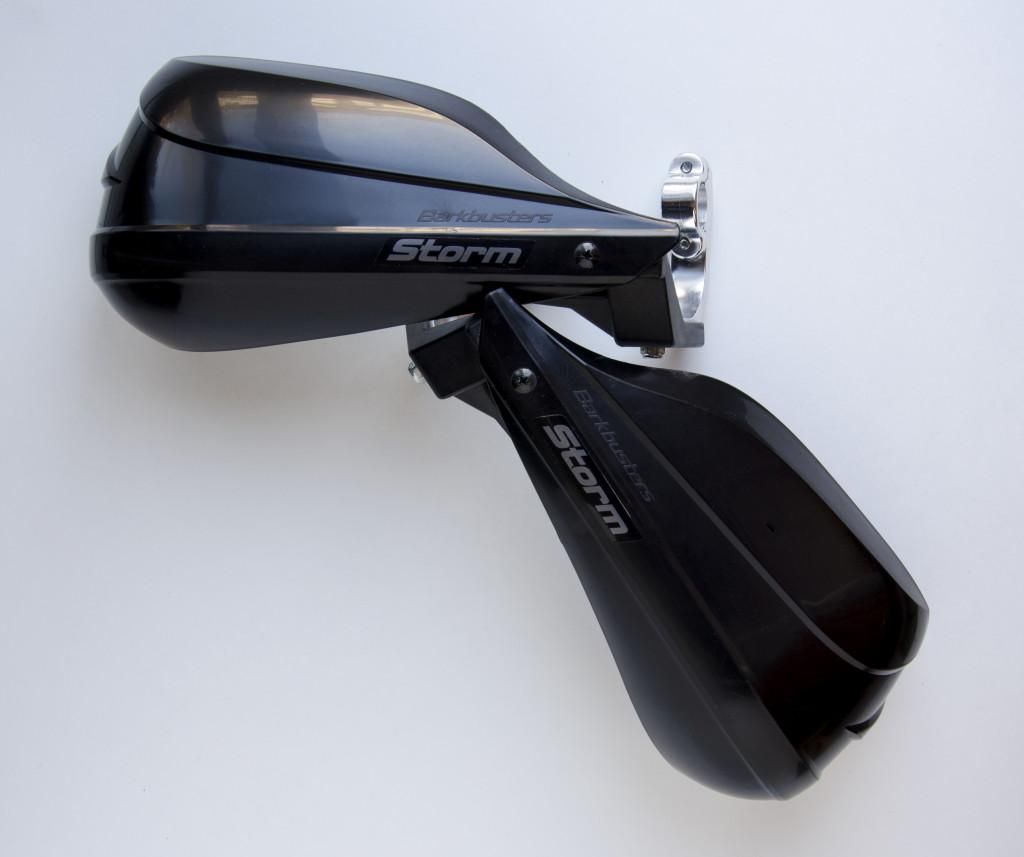
Storm guards block the wind
The one thing that'll get cold the fastest are your fingers. It's important to do what you can to prevent them from freezing up. If your hands can't function, you'll be in trouble. Storm guards, such as the Barkbusters brand, made by Rideworx, are a great way to block the cold wind from hitting your fingers head-on. Depending on the bike, you'll have to be careful when positioning them, not to obstruct the view in your mirrors.
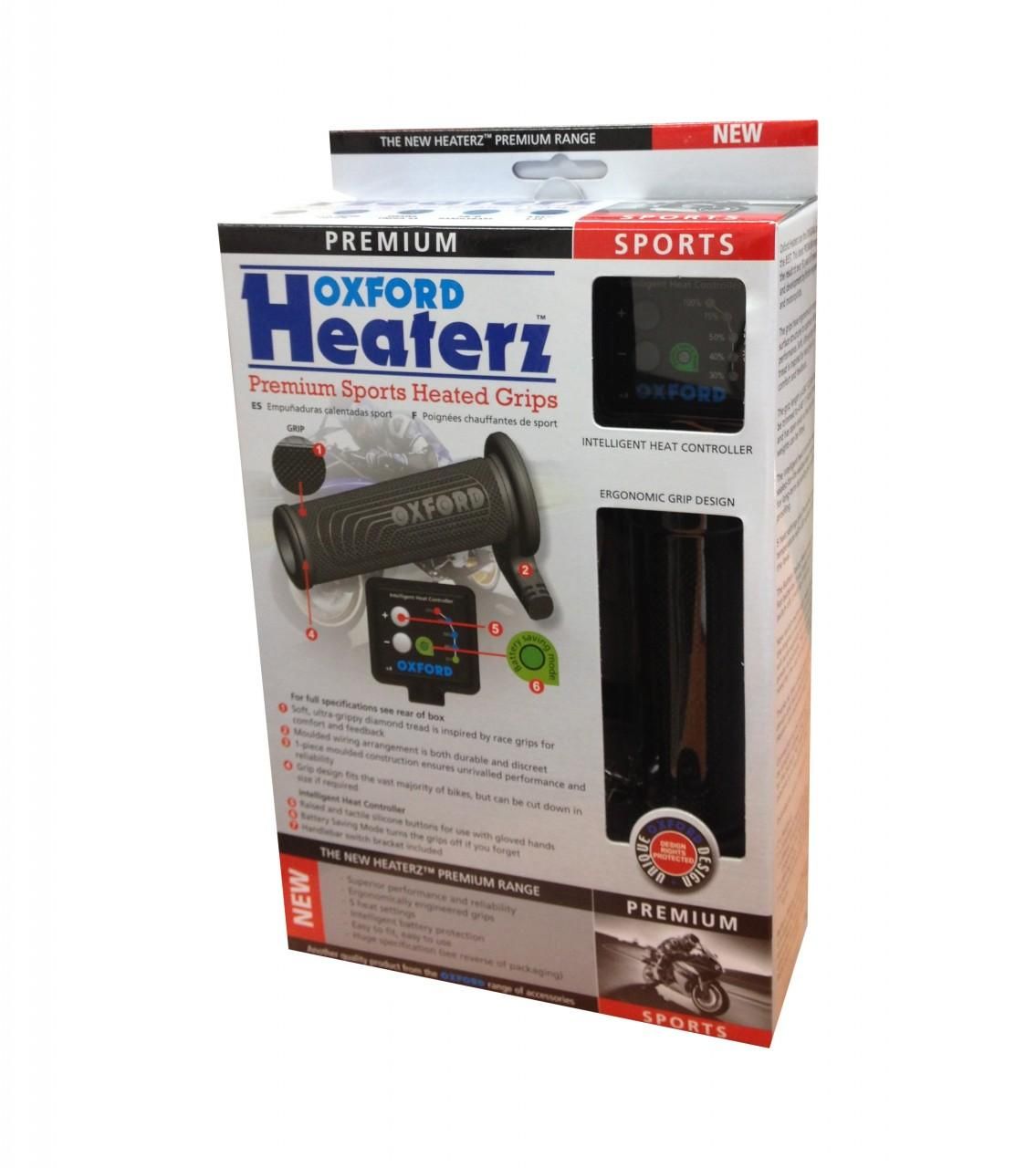
Heated grips provide warmth
Using heated grips will keep your fingers warm on the inside surface. Heaterz, made by Oxford Products USA, and at around $89 USD, are easy to install, hook up to your battery, come with a control panel to turn it on and off, and offer temperature adjustments. They can be left on your bike year round, but this will cause the grips to wear out more quickly, requiring replacements of around $40 USD. Heaterz are available in Canada from KIMPEX, or in the United States from Oxford Products USA, Inc.
I have not tried heated gloves and a vest, but that is also another good option.
Tire Pressure
Part of your usual pre-ride check will be to check that your tires are properly inflated. Be sure they are not over-inflated, as this will be very dangerous on the cold road surface, causing the tires to easily "skate" across the surface.
PREPARING YOUR BODY
Keeping your body warm is important for comfort, and safety. When we get cold, you can't move or react as quickly as we may need.
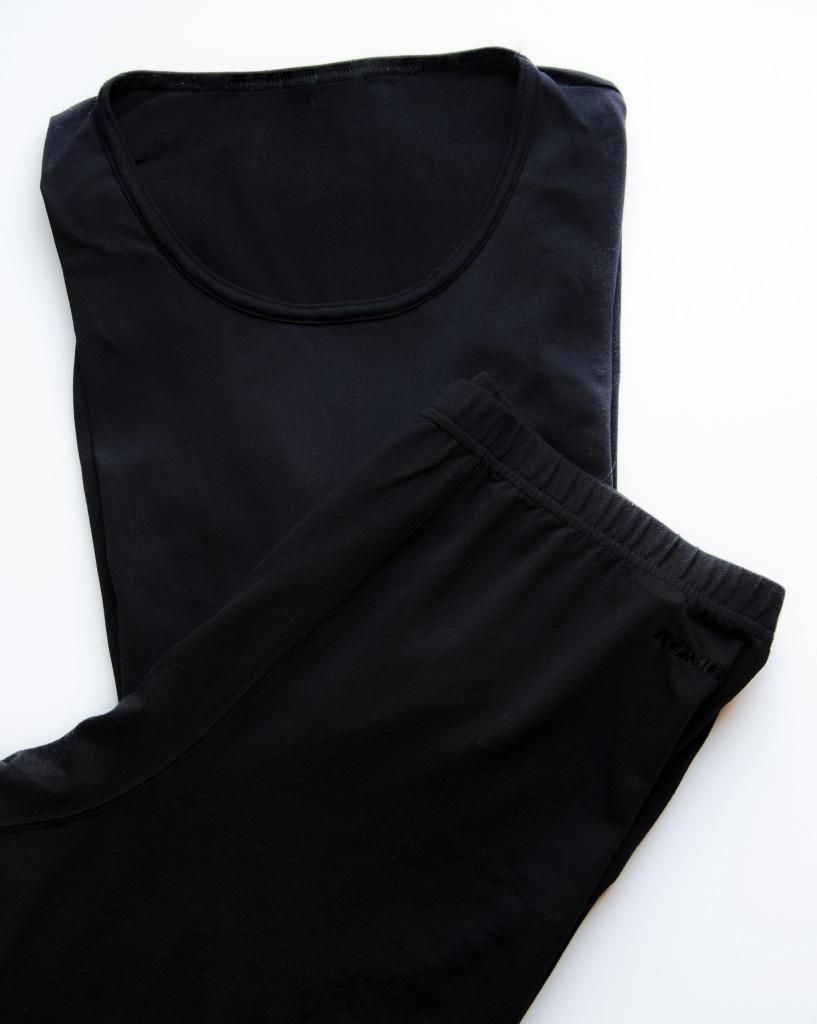
Start with a good base layer
Before gearing up, start with a good base layer, top and bottom. Modern textiles offer so much more than what we had years ago. Now you can have a thin base layer that will help keep you warm, without bulking you up and impeding your ability to move. Take a look at what the sporting goods stores have to offer - base layer garments made for snowboarding and skiing are perfect.
Dress in layers
On top of the base layer, jeans and a long sleeved t-shirt is fine with a hoodless fleece, zip-up jacket that'll fit under your leather jacket. Leather helps block the wind but is not particularly warm in itself. Make sure your winter liner is zipped into the jacket. As for textile jackets, Gore-tex can be very warm in winter, check to see what temperatures your outerwear is rated for. Double up your socks if you wish, but with my motorcycle boots and regular sport socks I've never had a problem.
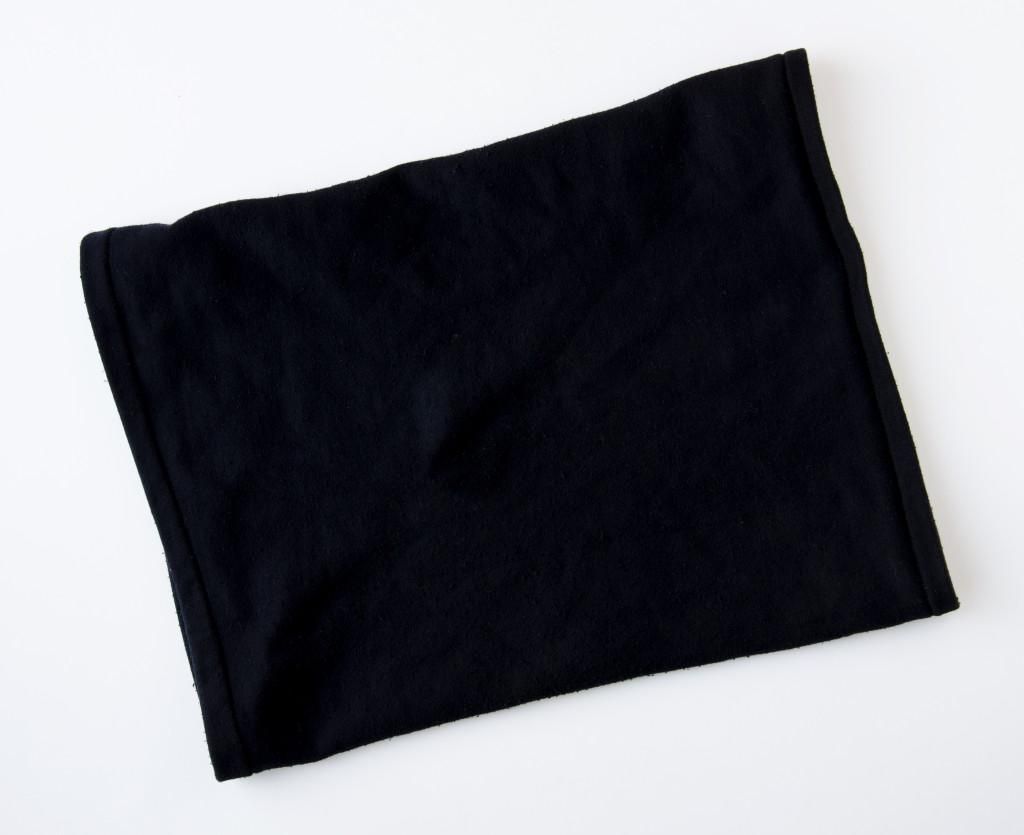
Stop the drafts
I absolutely HATE it when my neck is cold while riding. It will happen in spring and fall, too, not just winter. There are a few solutions I have for this, depending on the temperature. If it's really cold, you can keep your face extra warm with a thin balaclava of fabric similar to your base layer (not a heavy knitted one). However, this alone is not enough in winter as air will pass through the fabric, and your neck will get cold.
There are also shaped, leather and fleece-lined neck warmers that go up over your mouth and tuck into your jacket to really block the wind, although I find this extreme is usually unnecessary.
What suits me just fine is a fleece tube. I put it on, tuck it into my jacket neckline, up into my helmet, just covering my mouth, and that is enough to block the wind while still allowing me ease of movement (something the leather neck warmer hinders). If it's very cold, this can be used along with the balaclava.
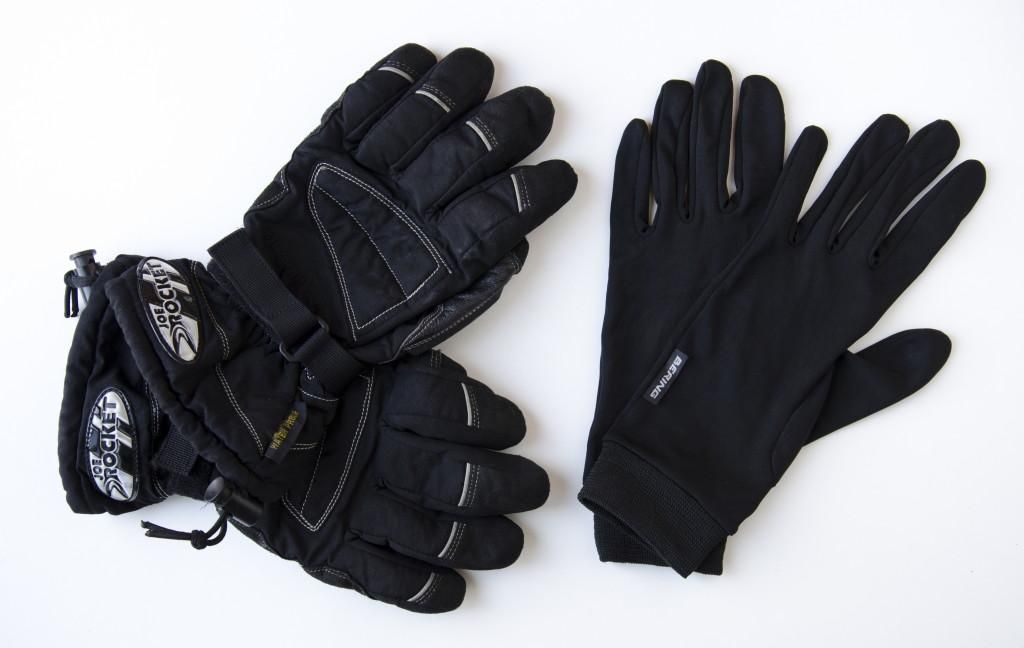
The gloves are key
Remember the rule: 10C and under WINTER GLOVES. In the springtime, if we're going on a long journey, we'll sometimes bring both pairs - start out with winter gloves, and switch over to summer gloves at some point if the temperature allows.
I have had to purchase many "winter" gloves to actually try them riding before finding some that were okay. I can't say the ones I have are perfect, but they are better than the pile I have that didn't work out.
DO NOT cheap out on the gloves. My Joe Rocket winter gloves were $80 at the time. The ones I bought my spouse looked the same, but were only $30. I have ridden with both pairs and his are definitely not warm enough. You are paying for materials and construction, not just a name, so it is worth it to spend the dollars to get the better gloves. That said, it can still be hit and miss. I have paid $80 to $130 for gloves, some that came with ratings of -30C, but none of them have performed as well as the Joe Rocket pair I favour.
To help improve your glove performance, a thin base layer glove doesn't hurt. The French military used use silk liners, something that could commonly be purchased in motorcycle stores in France at one time. Now, with the new advances in textiles, specially engineered synthetics are being used and are quite effective.
Keep your fingers moving. At stops, wiggle and flex them, and if needed, heat them near your engine.
THE BIG FINISH
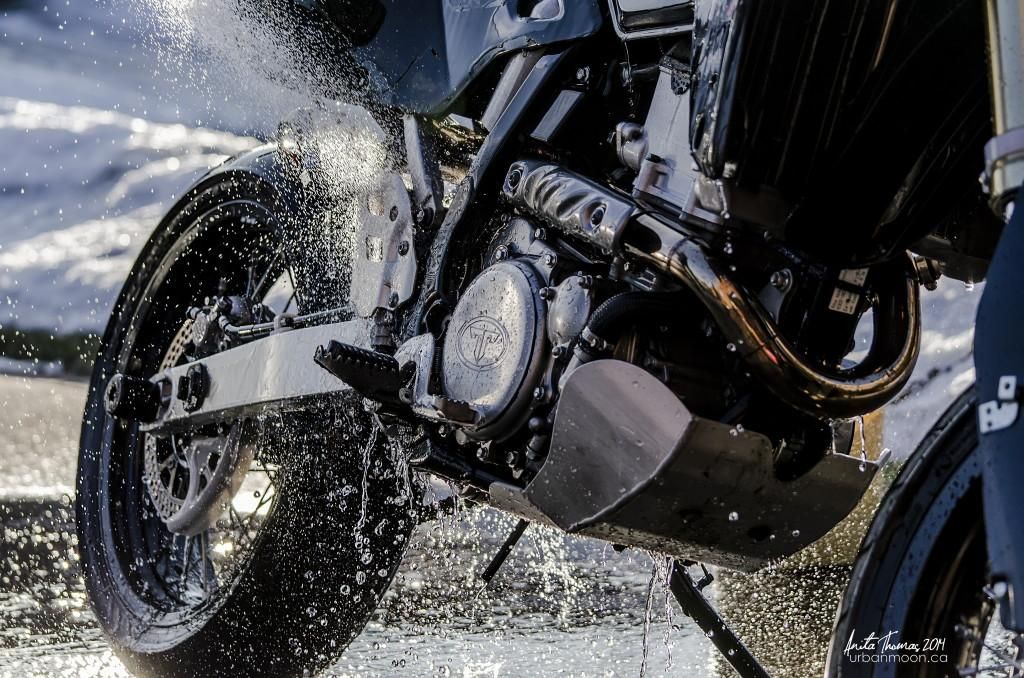
The price to play
Unfortunately the salt that's laid down in winter can damage your bike. If you only ride where the roads are dry, it will help to keep the salt build-up down, however, it is unavoidable in most cities where salt is used. If you can, it is always best to give your bike a good washing when you return from your ride. Plan for it, and leave time for it, preferably while the sun is still shining.
A big bucket of HOT, soapy water, and long rubber dish-washing gloves with gardening gloves over top, do a good job of keeping your fingers warm while you wash your bike in freezing temperatures. Work quickly, making sure you get under your bike, dry it, empty the hose of all water to prevent it from freezing rock hard, and call it a day (well spent!).
Ride safe and have fun!
You must be logged in to comment
Login now
One thing to keep in mind that many people forget. As the temperature changes the inside of your motor builds condensation. This water is often mixed in with your motor oil when you start your bike. If you have a motorcycle that has a separate oil bag (Harley guys) it's very possible for that water to get trapped in your oil feed lines and freeze solid. To avoid this you must bring your motor up to temp and run it for about 20 miles to burn the water out of the oil. This will change based on amount of water, type of oil and ambient temperature. If you are one of those folks who like to go out to the garage and hear your bike run for 5 minutes, you can seriously damage your motorcycle. If you don't plan to ride it, winter prep it and don't run it. Also, as a rider who rides his hog in single digit temps, keep in mind the stock battery will struggle to turn over those big twin motors especially if you use 20/50 natural motor oil. I learned early to ditch the stock battery for a big boar battery and change to synthetic. Now my bike fires right up even in single digits. When it gets cold your bike will not react as normal so take caution. Any water in the brake lines will make your brakes act different. The hydraulic oil in your front end will stiffen and change how the suspension reacts. Your clutch will stiffen and your friction zone will change.
@Slyck255 Well, yes, you're partially responsible, haha. I was going to do this at the beginning of the winter, but things came up and I couldn't. Then when @SuperchargeR asked how you stay warm, I thought I'd get it done and share what works for us.